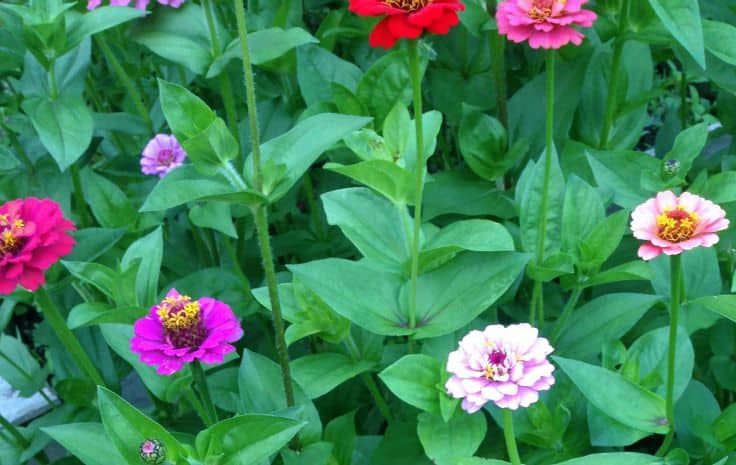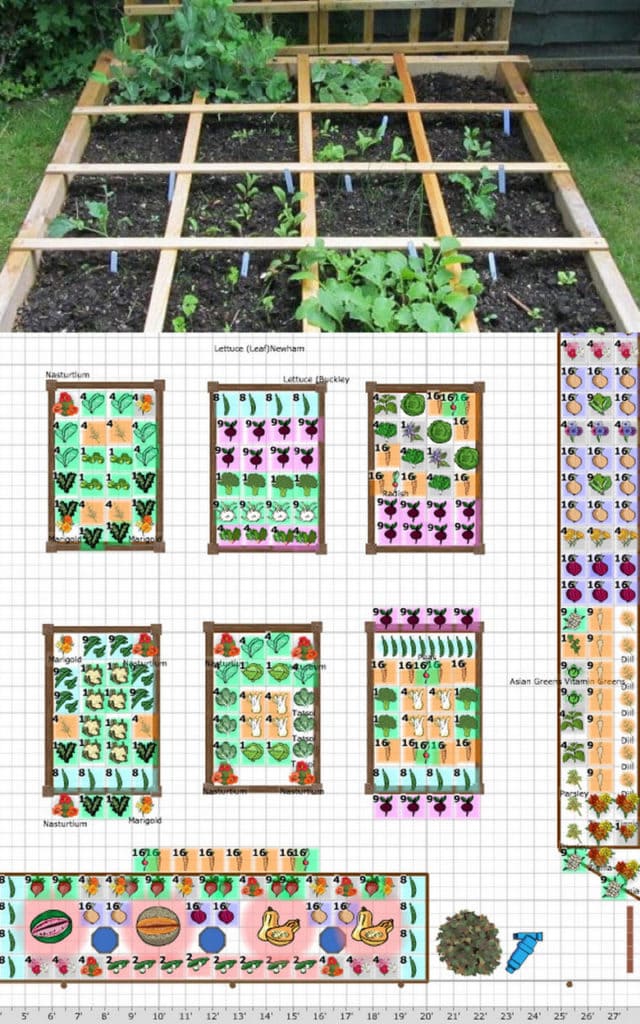How To: Companion Planting Ideas for Vegetables

Imagine your vegetable garden as a bustling community where each plant has a role to play. Some plants are the protectors, shielding their neighbors from pests and diseases. Others are the nurturers, enhancing soil health and nutrient availability. This harmonious ecosystem is the essence of companion planting. By strategically placing certain plants together, you can create a thriving, low-maintenance garden that practically takes care of itself. Let's dive into the fascinating world of companion planting ideas for vegetables and transform your garden into a lush, productive sanctuary.
Understanding Companion Planting
Companion planting is more than just arranging plants aesthetically; it's about creating a symbiotic relationship where each plant benefits the other. This practice can help with natural pest control, improve soil health, and even enhance the flavor of your vegetables. Think of it as matchmaking for your garden—pairing plants that complement each other's strengths and weaknesses.
Benefits of Companion Planting
Natural Pest Control: Certain plants repel pests that might otherwise harm your vegetables. For example, marigolds are known for their ability to deter nematodes, tiny worms that can wreak havoc on your garden.
Soil Enrichment: Some plants, like legumes, fix nitrogen in the soil, making it more fertile for their neighbors.
Space Efficiency: Companion planting allows you to maximize your garden space by interplanting different crops that have varying growth habits and maturity times.
Enhanced Flavor: Certain plant combinations can improve the taste of your vegetables. For instance, basil is said to enhance the flavor of tomatoes when planted nearby.
Creating Your Vegetable Garden Layout
Before you start planting, it's essential to plan your garden layout. Consider factors like sunlight, water requirements, and plant heights. A well-thought-out layout can make a significant difference in the health and productivity of your garden.
Tips for Designing Your Garden Layout
Sunlight: Ensure that taller plants do not shade out shorter ones. For example, plant tall crops like corn on the north side of your garden to avoid casting shadows on shorter plants.
Water Needs: Group plants with similar water requirements together to optimize irrigation.
Plant Heights: Arrange plants based on their height to create a visually appealing and functional garden.
The Ultimate Companion Planting Chart
A companion planting chart is a handy tool that outlines which plants work well together and which ones should be kept apart. Here's a simple chart to get you started:
| Plant | Good Companions | Bad Companions |
|---|---|---|
| Tomatoes | Basil, Marigolds, Carrots | Potatoes, Fennel |
| Cucumbers | Corn, Beans, Radishes | Sage, Potatoes |
| Lettuce | Carrots, Radishes, Strawberries | Parsley, Cabbage |
| Peppers | Tomatoes, Basil, Carrots | Fennel, Kohlrabi |
| Onions | Carrots, Beets, Lettuce | Beans, Peas |
How to Use the Companion Planting Chart
Identify Your Plants: List the vegetables you want to grow and refer to the chart to find their compatible companions.
Plan Your Layout: Use the chart to create a garden layout that maximizes the benefits of companion planting.
Avoid Incompatibilities: Make sure to keep plants that do not get along apart to prevent any negative interactions.
Plant Allies: Beneficial Plants for Your Garden
Certain plants are known for their beneficial properties, making them excellent allies in your garden. Here are a few examples:
Marigolds
Marigolds are a gardener's best friend. They contain a substance called thiopene, which helps repel nematodes and other pests. Plant marigolds around your vegetables to create a natural barrier against pests.
Nasturtiums
Nasturtiums are not only beautiful but also act as a natural pest repellent. They attract aphids, keeping them away from your vegetables. Plus, they are edible and add a peppery flavor to salads.
Chives
Chives are a versatile herb that can deter pests like aphids and mites. They also improve the flavor of nearby plants and can be used in various dishes.
Natural Pest Control with Companion Planting
One of the most significant advantages of companion planting is its ability to provide natural pest control. By strategically placing certain plants, you can create a pest-resistant garden without the need for harmful chemicals.
How Companion Planting Works for Pest Control
Repellent Plants: Some plants emit scents that repel pests. For example, mint and rosemary can deter ants and flies.
Trap Crops: Certain plants attract pests, acting as a decoy to protect your vegetables. Nasturtiums are a great example, as they lure aphids away from other plants.
Beneficial Insects: Some plants attract beneficial insects that prey on pests. For instance, dill and yarrow attract ladybugs, which feed on aphids.
Putting It All Together: Your Companion Planting Plan
Now that you have a solid understanding of companion planting, it's time to put your plan into action. Here's a step-by-step guide to help you get started:
Choose Your Plants: Select the vegetables and beneficial plants you want to grow.
Create a Layout: Use the companion planting chart to design a layout that maximizes the benefits of each plant.
Prepare Your Soil: Ensure your soil is rich in nutrients and well-draining. Add compost or organic matter if needed.
Plant Your Garden: Follow your layout and plant your vegetables and beneficial plants accordingly.
Maintain Your Garden: Regularly water, weed, and monitor your garden for pests and diseases.
Conclusion
Companion planting is a powerful tool that can transform your vegetable garden into a thriving ecosystem. By strategically placing plants that complement each other, you can achieve natural pest control, improve soil health, and enhance the flavor of your vegetables. With a well-thought-out garden layout and the help of beneficial plants, you can create a harmonious garden that practically takes care of itself.
So, are you ready to turn your garden into a lush, productive sanctuary? Start by planning your layout, referring to the companion planting chart, and incorporating beneficial plants. With a little effort and the right strategy, you can create a garden that not only looks beautiful but also provides a bountiful harvest.
Happy gardening!
FAQs
What is the best way to start companion planting?
- Start by choosing the vegetables you want to grow and researching their compatible companions. Use a companion planting chart to create a layout that maximizes the benefits of each plant.
Can companion planting help with pest control?
- Yes, companion planting can provide natural pest control by incorporating plants that repel pests, act as trap crops, or attract beneficial insects.
What are some common beneficial plants for companion planting?
- Common beneficial plants include marigolds, nasturtiums, chives, mint, and rosemary. These plants can repel pests, improve soil health, and enhance the flavor of your vegetables.
How do I create a vegetable garden layout?
- Consider factors like sunlight, water requirements, and plant heights when designing your garden layout. Group plants with similar needs together and ensure taller plants do not shade out shorter ones.
What should I do if I encounter pests in my garden?
- If you encounter pests, identify the type of pest and research natural remedies or beneficial plants that can help control them. Regularly monitor your garden and take action promptly to prevent infestations.


0 Response to "How To: Companion Planting Ideas for Vegetables"
Post a Comment